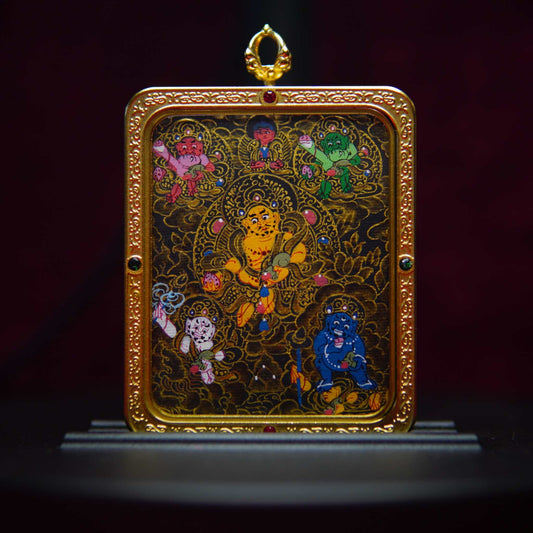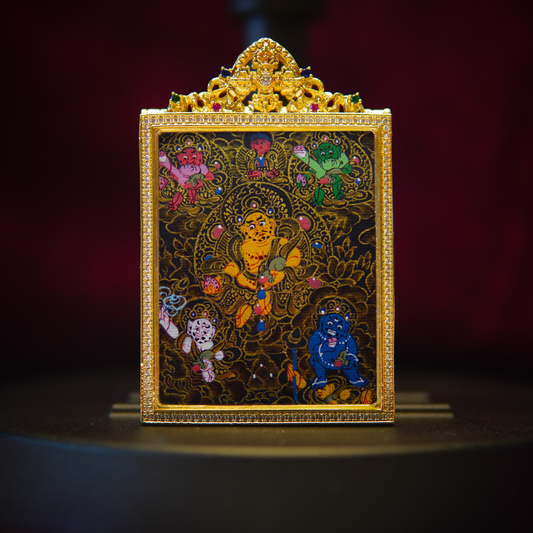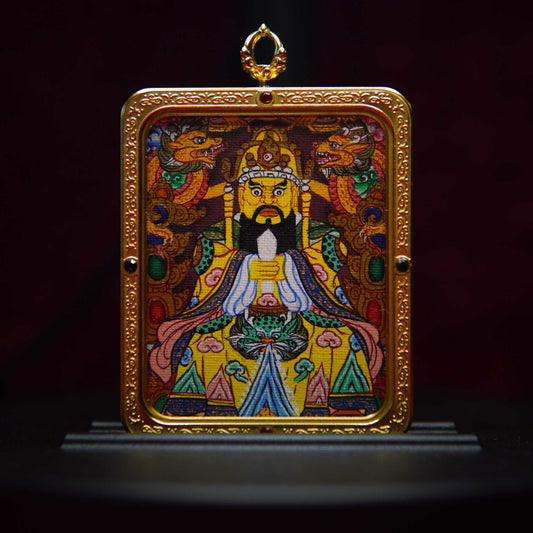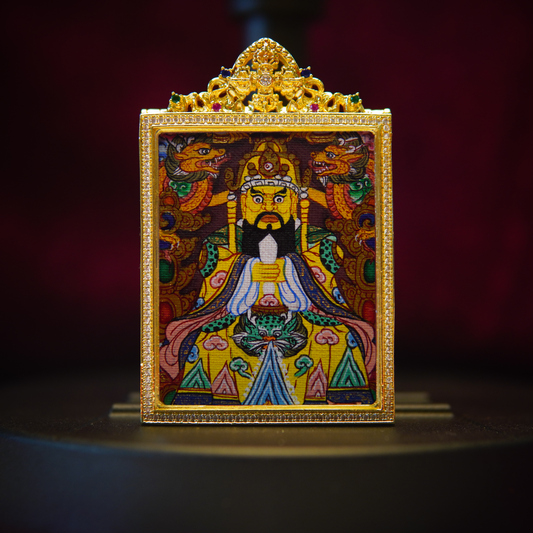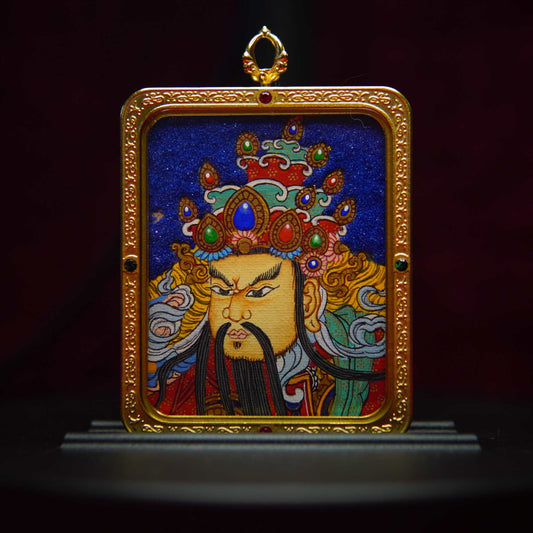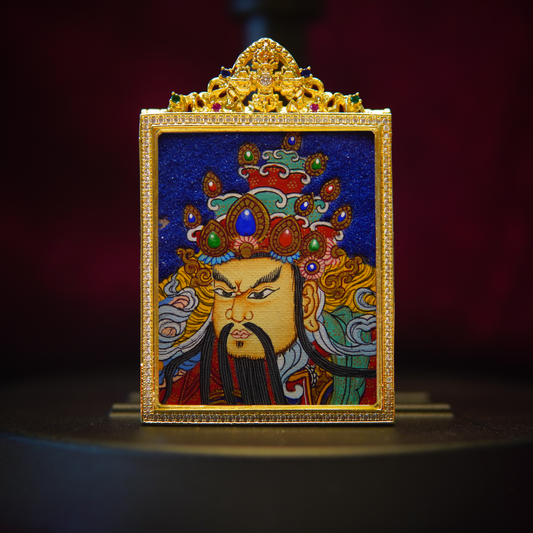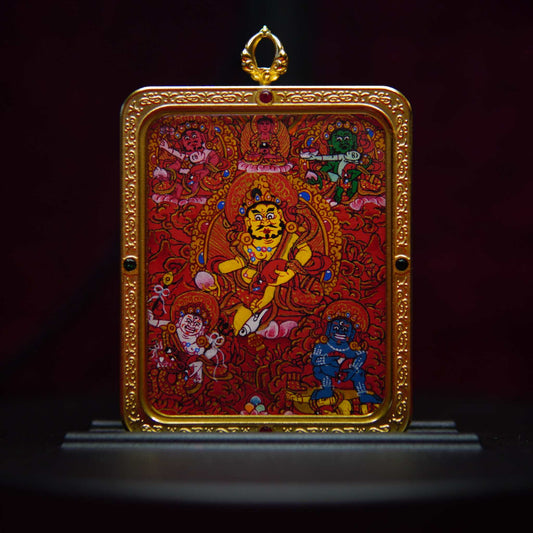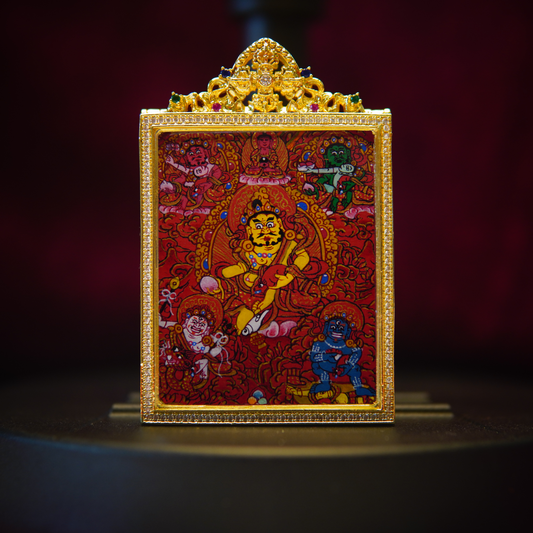What Is the Purpose of a Thangka?
Tapita- What Is the Purpose of a Thangka?
- What exactly is a Thangka, and what is its purpose?
- 🖼️ What Is a Thangka?
- 🎯 The 5 Main Purposes of a Thangka
- 1. A Tool for Meditation
- 2. A Spiritual Teaching Device
- 3. An Object of Blessing and Protection
- 4. A Bridge Between the Human and the Divine
- 5. A Cultural and Historical Legacy
- 💎 Thangka Necklaces: Sacred Art You Can Wear
- ✨ Final Thoughts
More than art. A spiritual tool, a teacher, and a portal to the sacred.
If you’ve ever seen a Tibetan Thangka painting—vibrant colors, sacred geometry, and divine figures suspended in space—you might wonder:
What exactly is a Thangka, and what is its purpose?
While to the casual observer a Thangka may look like a beautiful painting, to a practitioner of Tibetan Buddhism, it’s a living embodiment of the teachings, a guide to meditation, and a sacred connection to the divine.
A Thangka (also spelled “Tangka” or “Tanka”) is a traditional Tibetan scroll painting. Most often, it features Buddhas, bodhisattvas, protectors, or complex mandalas on cotton or silk, bordered with brocade and sometimes adorned with relics or mantras.
Thangkas are not just decorative—they are made with precise ritual proportions and deep spiritual symbolism, following iconographic texts passed down for centuries.
🎯 The 5 Main Purposes of a Thangka
1. A Tool for Meditation
The primary use of a Thangka is to serve as a visual aid during meditation. Practitioners focus on the image of a deity or mandala to:
-
Cultivate compassion (e.g., with Avalokiteshvara)
-
Develop wisdom (e.g., with Manjushri)
-
Invoke healing energy (e.g., with Medicine Buddha)
-
Visualize a protective force (e.g., Green Tara or Vajrapani)
Through gazing and visualization, the practitioner absorbs the deity’s qualities into their own consciousness.
2. A Spiritual Teaching Device
Thangkas are sometimes referred to as the “textbooks of Tibetan Buddhism.” They depict:
-
The life of the Buddha
-
Scenes from Buddhist cosmology
-
Detailed symbolic maps of enlightenment (mandalas)
Even illiterate practitioners throughout history could “read” the teachings by studying the images, colors, mudras, and symbols within each Thangka.

3. An Object of Blessing and Protection
Thangkas—especially those empowered by lamas or monks—are believed to carry the blessings of the deities they represent. That’s why many people:
-
Hang Thangkas in homes or altars to bring protection and harmony
-
Wear miniature Thangka pendants to keep sacred energy close
-
Use Thangkas during rituals to invoke divine presence
In this sense, a Thangka is not just art, but a spiritual presence.
4. A Bridge Between the Human and the Divine
Each Thangka is made with great devotion, often taking weeks or months to complete. The painting process itself is considered a form of meditation and merit-making.
The final artwork becomes a spiritual bridge—connecting the viewer with enlightened energy and the lineage of Buddhist teachings.
5. A Cultural and Historical Legacy
Thangkas are also valuable as cultural artifacts. They preserve Tibetan Buddhist iconography, protect endangered artistic lineages, and offer insight into centuries of devotional art and philosophy.
At a time when fast consumption dominates, a Thangka reminds us of slowness, depth, and sacred intention.
In modern times, artisans have begun transforming traditional Thangka motifs into wearable spiritual jewelry—miniature Thangka pendant necklaces that carry the same purpose: blessing, protection, meditation, and remembrance.
Each piece from Zendo Thangka is:
-
Hand-painted with sacred figures like the Medicine Buddha or Green Tara
-
Sealed with relic scrolls or mantras inside the pendant
-
Meant to be worn over the heart, creating a personal altar you carry everywhere
It’s not just jewelry—it’s spiritual intimacy in everyday life.
✨ Final Thoughts
So, what is the purpose of a Thangka?
It is a sacred window—into the divine, into the mind, into the present moment. Whether displayed in a monastery, meditated on during practice, or worn close to your heart, a Thangka is always more than it appears.
It teaches. It protects. It blesses.
And for many, it becomes a lifelong companion on the path to awakening.

